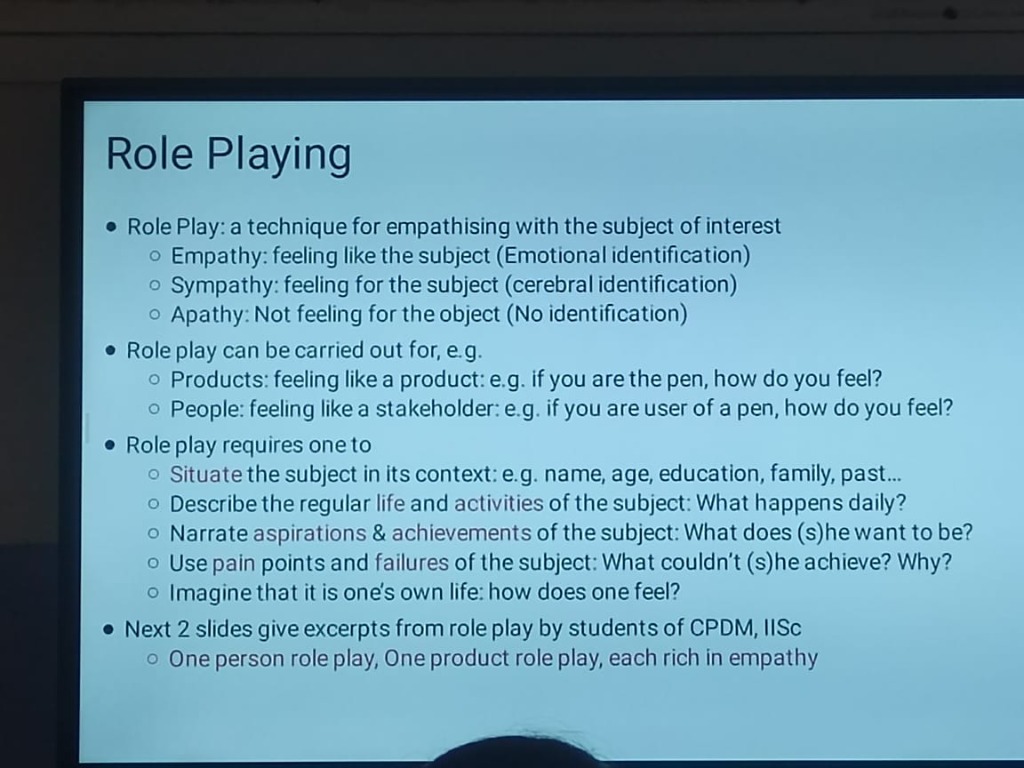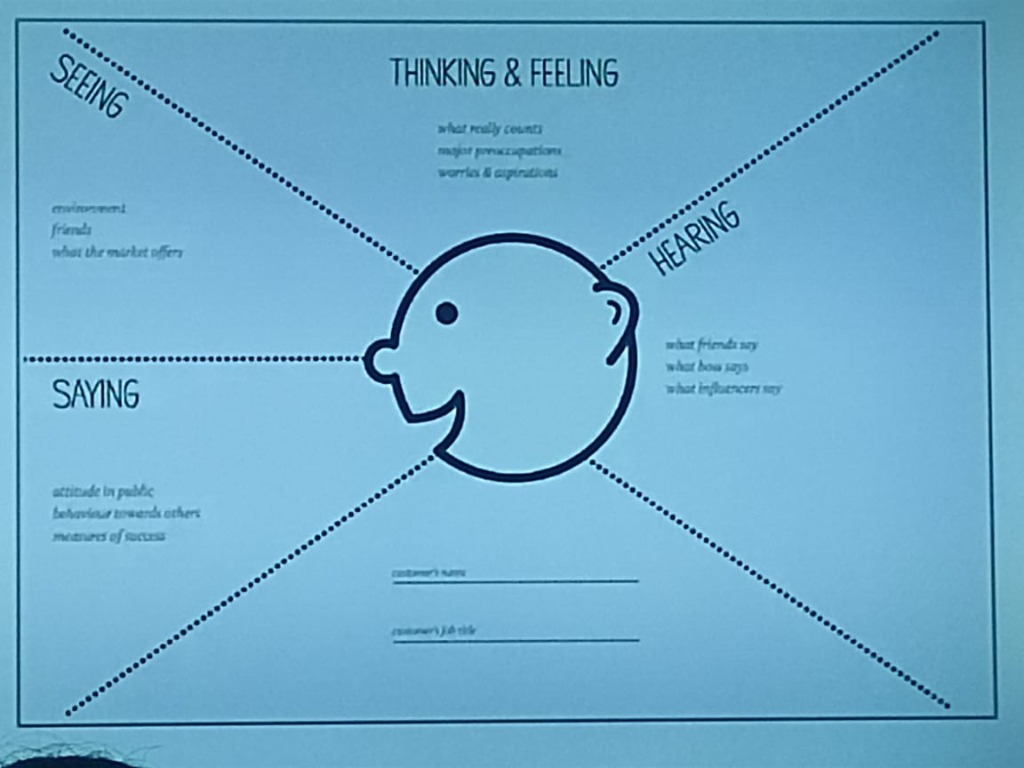Role Playing for Empathy and Customer Insights
Role Playing in Empathy

Definition and Purpose
- Role Play: A technique for empathizing with the subject of interest.
- Empathy: Feeling like the subject (emotional identification)
- Helps in understanding the emotions and experiences of others, facilitating deeper connections.
- Sympathy: Feeling for the subject (cerebral identification)
- Useful for recognizing challenges faced by others without fully immersing oneself in their experience.
- Apathy: Not feeling for the object (no identification)
- This can be detrimental in understanding personal or social issues, as it distances oneself from the subject's reality.
- Empathy: Feeling like the subject (emotional identification)
Applications of Role Play
- Role play can be executed in various contexts, including:
- Products: Example: "If you are the pen, how do you feel?"
- Such exercises can help in product design by understanding user experiences from the product's perspective.
- People: Example: "If you are a user of a pen, how do you feel?"
- This encourages stakeholders to take on the role of actual users, which can influence service or product improvement.
- Products: Example: "If you are the pen, how do you feel?"
Requirements for Effective Role Play
- Participants should:
- Situate the subject in its context: For example, knowing details like name, age, education, family background.
- This contextual knowledge enriches the role play and brings realism to the scenario.
- Describe the regular life and activities of the subject: Understand what happens daily in their life.
- This helps grasp the daily struggles or joys that shape their behavior and needs.
- Narrate aspirations & achievements: Recognize what the subject wishes to accomplish in life.
- Encourages empathy towards their goals and dreams, making one aware of their motivations.
- Use pain points and failures: Acknowledge what couldn’t be achieved and the reasons why.
- Understanding setbacks provides insights into resilience and the emotional impact of failure.
- Imagine it as one's own life: Contemplate how it would feel to live the subject’s experiences.
- This deepens the level of empathy and connection with the subject’s plight.
- Situate the subject in its context: For example, knowing details like name, age, education, family background.
Conclusion
- The next two slides present role play excerpts from students of CPDM, IISc, emphasizing the richness of empathy through practical applications:
- Each role play scenario is designed to foster empathy by encouraging participants to engage deeply with the subject matter, whether it's a person or a product.
Extended readings:
www.betterup.com
The Difference Between Empathy vs. Sympathy - BetterUp
everydayspeech.com
Building Empathy Skills: Practical Role Play Scenarios for Learning ...
mylearningtools.org
[PDF] Practicing Empathy and Sympathy - Resilience, Inc
Customer Journey Mapping: Insights Diagram

Overview
The image presents a framework for understanding customer behavior by analyzing different perspectives—Seeing, Hearing, Saying, and Thinking & Feeling. This framework can help businesses align their marketing strategies with customer experiences.
Key Sections
1. Seeing
- Environment: Refers to the physical or digital spaces where customers interact with a brand. Consider optimizing these environments for better customer experiences.
- Friends: The influence of social circles on customer decisions. Companies can enhance word-of-mouth marketing by leveraging referral programs.
- What the Market Offers: Awareness of competitor offerings. Staying informed about competitors can help tailor products and services to meet gaps in the market.
2. Hearing
- What Friends Say: Testimonials and recommendations from peers sway customer decisions. Create platforms for users to share experiences.
- What Boss Says: Employee recommendations can significantly influence customer perceptions. Businesses should focus on internal culture.
- What Influencers Say: The impact of social media influencers on customer choices. Collaborating with trusted influencers can widen reach and credibility.
3. Saying
- Attitude in Public: Customers’ public behavior can reflect their loyalty. Foster a community that encourages positive public endorsements.
- Behavior Towards Others: How customers engage with other potential customers can create a brand community. Engaging with users can enhance loyalty.
- Measures of Success: Understand what success looks like to the customer (e.g., satisfaction, product quality). Collecting feedback can optimize the customer experience.
4. Thinking & Feeling
- What Really Counts: Identify key factors that are important to customers. Conducting surveys can guide product development.
- Major Preoccupations: Address concerns that may prevent customers from choosing a product. Transparent communication can alleviate these worries.
- Worries & Aspirations: Understanding customer desires and anxieties can help tailor messaging that resonates emotionally.
Customer Information Fields
- Customer's Name: __________________
- Customer's Job Title: __________________
This section allows for capturing specific customer insights, facilitating personalized marketing approaches.
Additional Notes
- Utilizing this framework can enhance empathy towards customers, guiding more effective business strategies.
- This analysis can be pivotal for user experience design, marketing campaigns, and product development.
Extended readings:
www.qualtrics.com
Customer Journey Mapping 101: Definition, Template & Tips
www.woopra.com
7 Interesting Real-Life Customer Journey Map Examples - Woopra
www.interaction-design.org
What is Customer Experience Mapping? — updated 2024 | IxDF